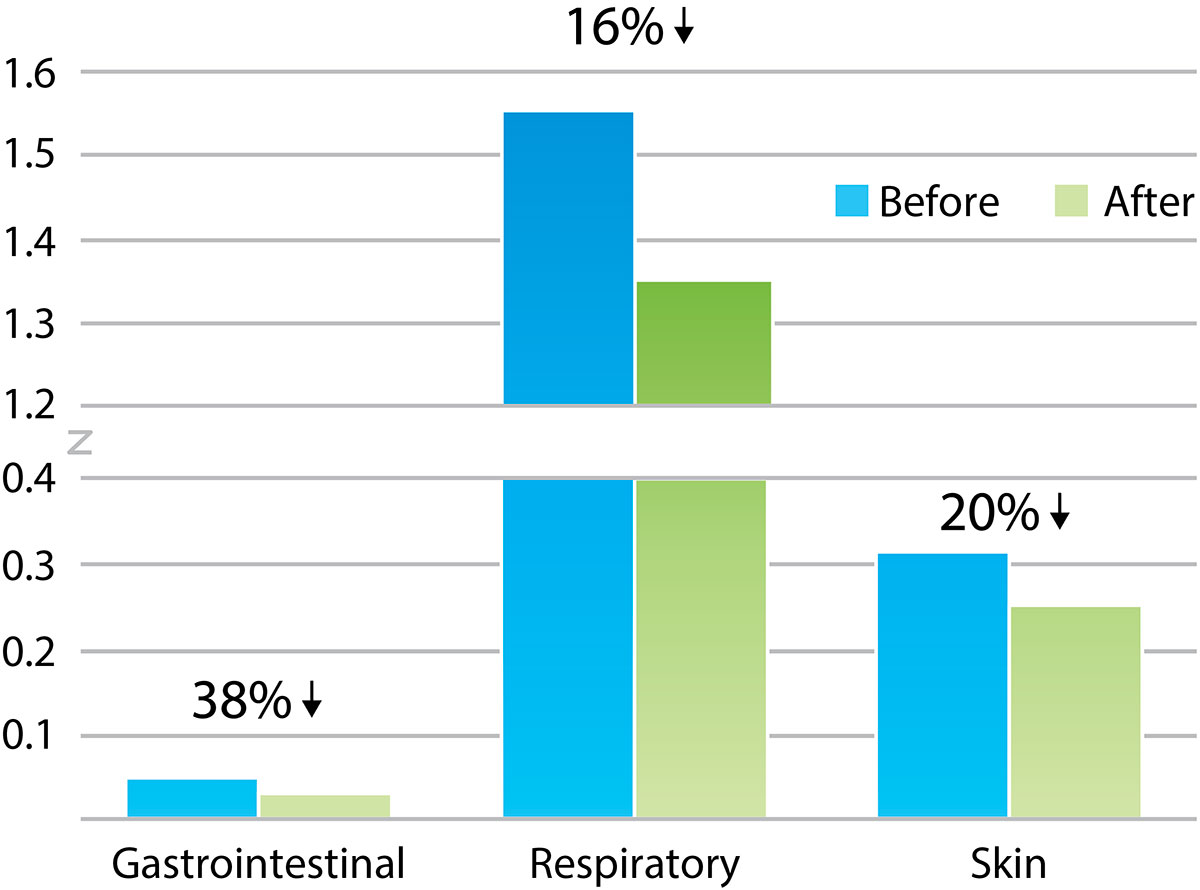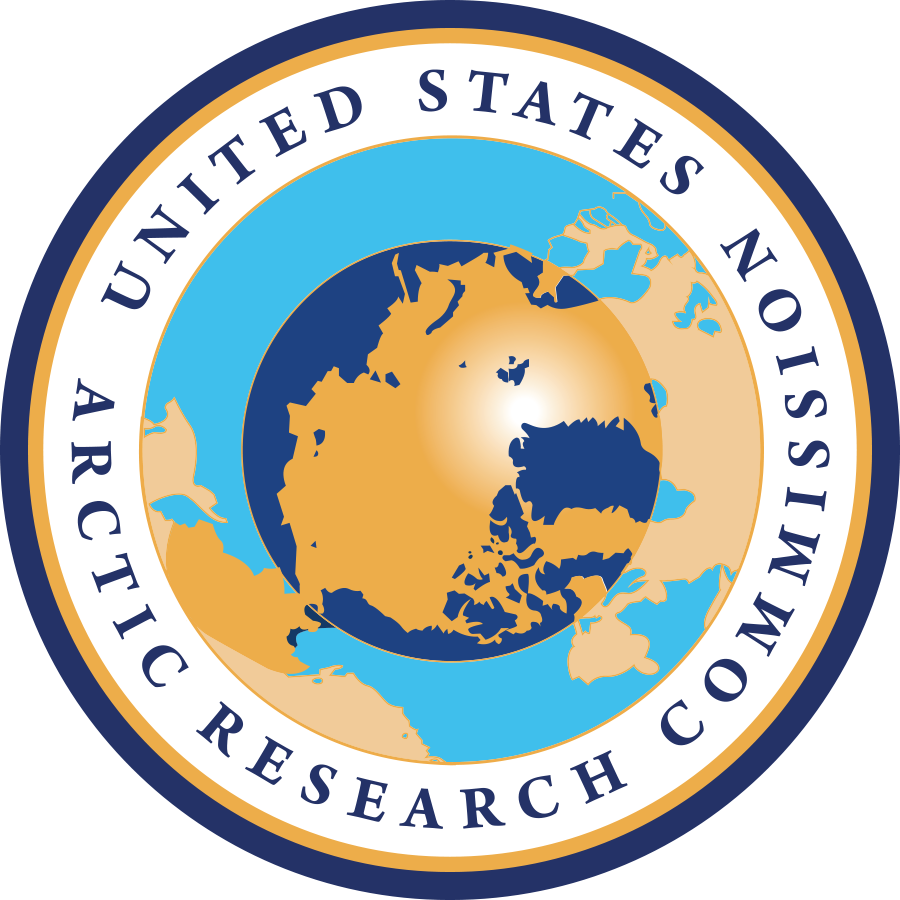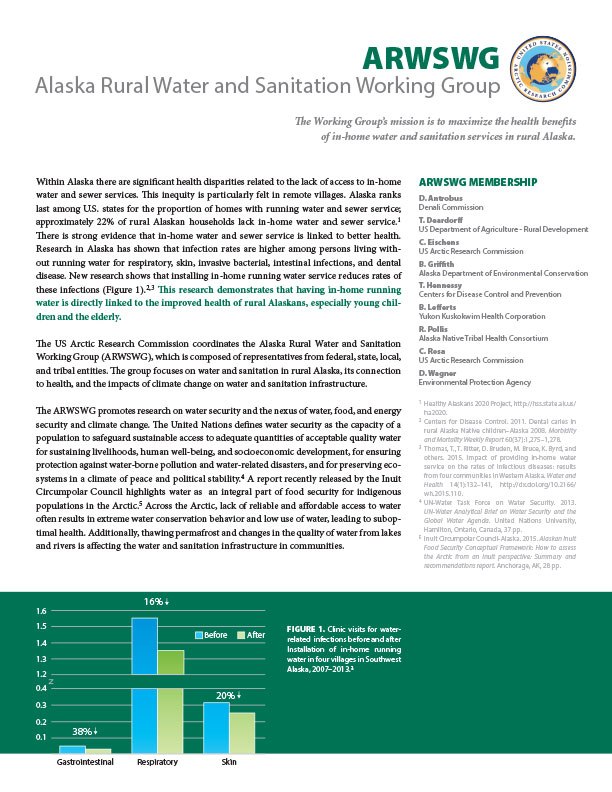Alaska Rural
Water and Sanitation
Working Group
A USARC-Coordinated
Working Group
Alaska Rural Water and Sanitation Working Group
A USARC-Coordinated Working Group
Background
Within Alaska there are significant health disparities related to the lack of access to in-home water and sewer services. This inequity is particularly felt in remote villages. There is strong evidence that in-home water and sewer service is linked to better health. Research in Alaska has shown that infection rates are higher among persons living without running water for respiratory, skin, invasive bacterial, intestinal infections, and dental disease. New research shows that installing in-home running water service reduces rates of these infections (Figure 1).1,2 This research demonstrates that having in-home running water is directly linked to the improved health of rural Alaskans, especially young children and the elderly.
The United Nations defines water security as the capacity of a population to safeguard sustainable access to adequate quantities of acceptable quality water for sustaining livelihoods, human well-being, and socioeconomic development, for ensuring protection against water-borne pollution and water-related disasters, and for preserving ecosystems in a climate of peace and political stability.3 Across the Arctic, lack of reliable and affordable access to water often results in extreme water conservation behavior and low use of water, leading to suboptimal health. Additionally, thawing permafrost and changes in the quality of water from lakes and rivers is affecting the water and sanitation infrastructure in communities.

Figure 1. Clinic visits for water-related infections before and after Installation of in-home running water in four villages in Southwest Alaska, 2007–2013.3
Challenges to Providing Clean Water and Sanitation
Current approaches to addressing rural Alaska water and sewer needs are not achievable or sustainable for all communities. Specifically:
- In many instances, rural sanitation facilities are increasingly unaffordable to build and maintain.
- Upgrades are necessary in some communities to address climate change impacts on water and wastewater infrastructure.
- Current funding is not adequate to serve remaining homes or to make the improvements required for healthy living.
- New technologies are needed to address health problems associated with water and sewer system deficiencies.
More info
Check out the ARWSWG brochure for more information on this working group. Available Format: 281 KB pdf
References
1. Centers for Disease Control. 2011. Dental caries in rural Alaska Native children–Alaska 2008. Morbidity and Mortality Weekly Report 60(37):1,275–1,278.
2. Thomas, T., T. Ritter, D. Bruden, M. Bruce, K. Byrd, and others. 2015. Impact of providing in-home water service on the rates of infectious diseases: results from four communities in Western Alaska. Water and Health 14(1):132–141, http://dx.doi.org/10.2166/wh.2015.110.
3. UN-Water Task Force on Water Security. 2013. UN-Water Analytical Brief on Water Security and the Global Water Agenda. United Nations University, Hamilton, Ontario, Canada, 37 pp.
Home | About | Publications | Working Groups | News & Events | Policies | Photo Credits | Privacy
Looking for U.S. government information and services? Visit USA.gov
Connect
Looking for U.S. government information and services? Visit USA.gov



